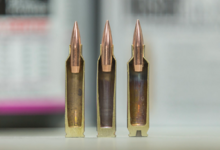primary question, without a bolt to lift what else do you use to feel for pressure signs when ladder testing? I know to look for primers and extractor marks but bolt lift has always been the most obvious to me.
Secondary question, is more general to all platforms but is a safe handload for one rifle ok to fire in other rifles and platforms?
Secondary question, is more general to all platforms but is a safe handload for one rifle ok to fire in other rifles and platforms?













